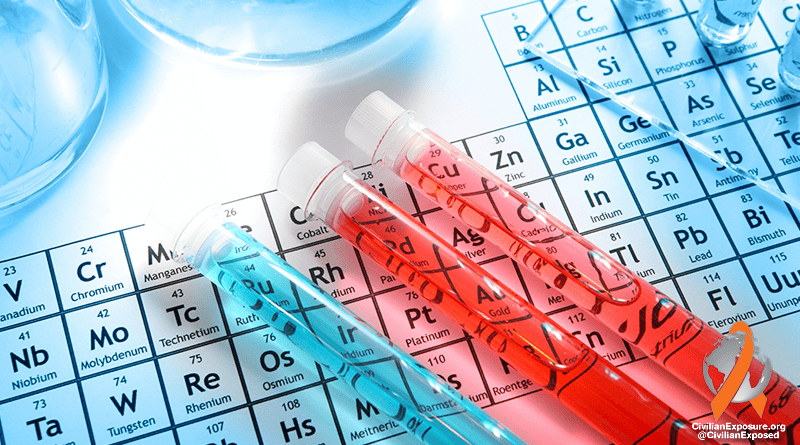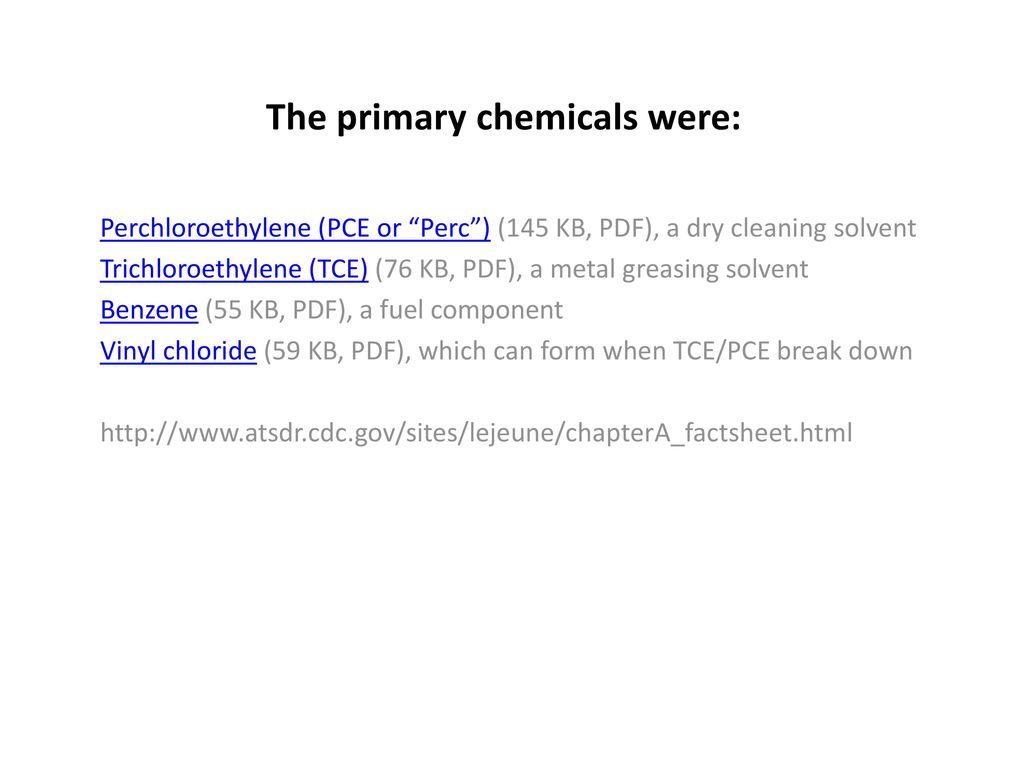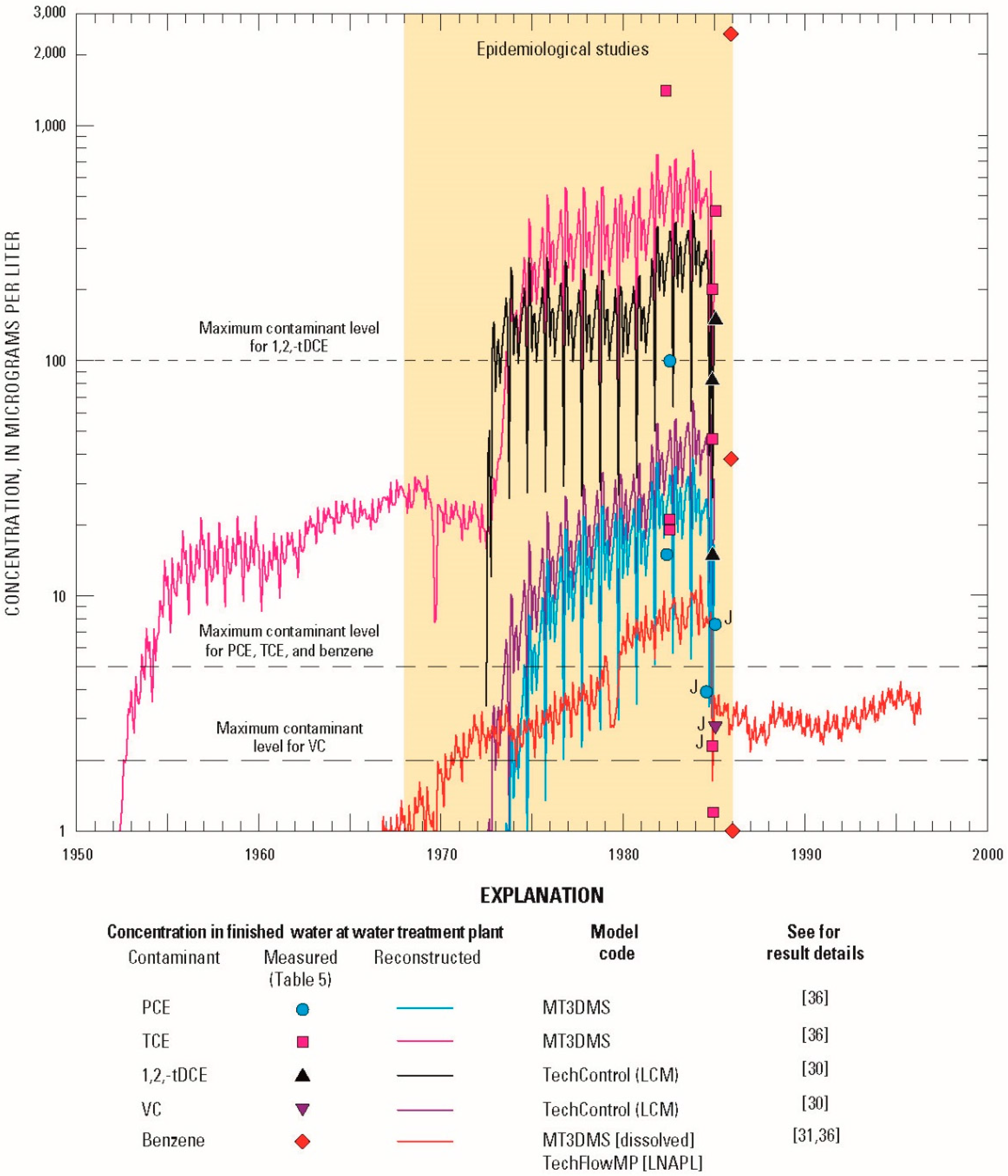Government estimates that 9 34 of drinking water in this country contains tce and in some communities tce contamination in drinking water is quite high.
Tce perchloroethylene pce benzene and vinyl chloride.
All of the references are listed at the end.
Tce belongs to a large class of chemicals called organic solvents.
The current limit for tce in drinking water is 5 μg l.
A much larger number of studies have looked at health problems among workers exposed to tce pce benzene and vc.
Atsdr assessed 16 diseases in its document atsdr assessment of the evidence for the drinking water contaminants at camp lejeune and specific cancers and other diseases pdf icon.
Therefore not everyone who is exposed to trichloroethylene tce tetrachloroethylene pce benzene or vinyl chloride exposure will develop a health problem.
Tce exposure may cause kidney cancer and increase the risk of lymphoma and liver cancer.
Reported health effects linked to tce pce benzene and vinyl chloride by civilian exposure 6568 views in addition to the conditions listed in the 2012 camp lejeune law regarding contamination and healthcare atsdr studies also reveal these observed health effects due to contamination.
The numbers in parentheses indicate the reference for the study.
Tce is a solvent used for cleaning metal parts.
The maximum level detected in drinking water was 1 400 μg l in may 1982.
It may be found in contaminated soil or water near military bases and in some commercial and household cleaning products.
Tests from routine water treatment plant sampling and samples of water supply wells identified that trichloroethylene tce tetrachloroethylene pce vinyl chloride vc and benzene contaminated some drinking water sources at camp lejeune.
Nevertheless few published studies have analyzed the wide spectrum of ads in subjects exposed to oss.
Alcohols acetone methyl ethyl ketone trichloroethane methylene chloride benzene toluene and xylene are just a few other examples of organic solvents.
Most organic solvents share the same basic.
Research in this area began in 1957 when the first patients developing a scleroderma like syndrome after exposure to vinyl chloride epoxy resins trichloroethylene tce perchloroethylene and other mixed solvents were reported.
Exposure can occur via drinking water food or air or in occupational settings blossom et al.
Below is a list of the types of health outcomes that have been found to be linked to tce pce benzene and vc.
They are all colorless chemicals.
Trichloroethylene tce was the main contaminant.
Trichloroethylene tce is a chemical used to make refrigerants and as a metal degreaser.



















